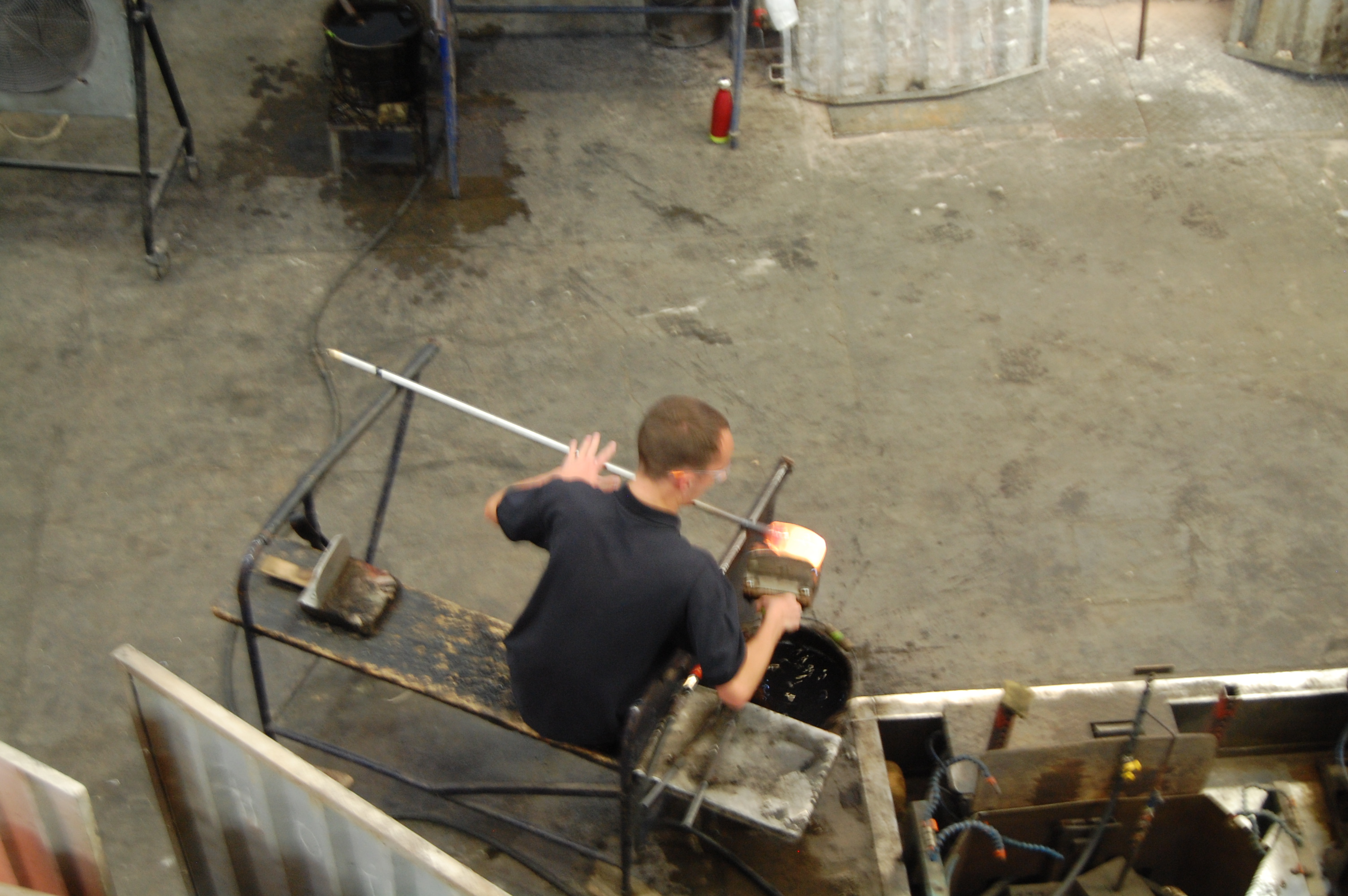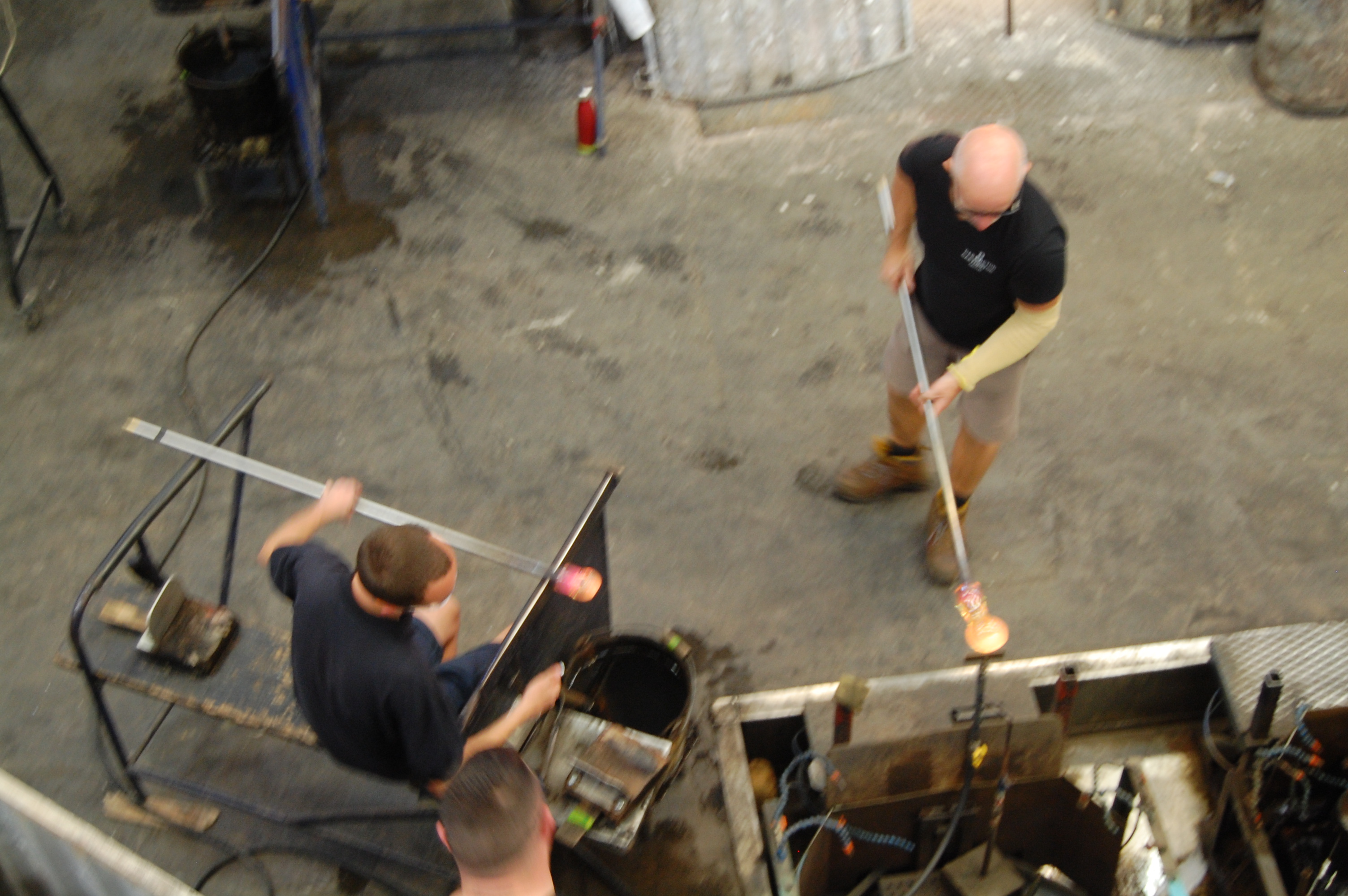Not exactly the depth of anything, more a large-scale shed, from where one of this country’s most celebrated export and domestic products appears. This is Dartington Glass, established at the restored Dartington estate in Devon, its staff trained by Scandinavian glassblowers, and now removed to what can only be described as a scruffy site in the small town of Great Torrington. Its near neighbour is RHS Rosemoor, and a greater contrast is hard to imagine. Yet both provide experiences of great skill and beauty.
The furnaces at Dartington Glass are fired continuously all year because to allow them to cool down would cost a fortune in refiring. However, each contains a clay chamber that must be renewed every six weeks. How that is done makes for wonder.
The glassblowing process involved retrieving molten glass from a furnace carrying it to a work station and short episodes of blowing, turning and shaping within a water-cooled mould. There is near-constant movement about the factory floor that, with such dangerous material, requires almost a choreography. Each blower knows his or her (there was one woman working with what would become a decanter, we thought) area of movement and work place. There was joint activity in measuring with calipers or cutting. The decanter had also to have its neck opened to a precise circumference and, as we saw later, an individual stopper made for it. (Visitors to the showroom are asked not to exchange stoppers on this account.)
Visits are timed throughout the day, Monday to Friday. With the furnaces still fully fired we assume work goes on in peace through the weekend. It is not suitable for visitors who cannot climb stairs because the viewing platform is abot 3 metres above the work space. As with every visitor experience (Rosemoor no exception) the way out is above the finishing room and through the showroon and shop. The good thing about Dartington is of course the extrememdesirability of the product. Factory prices are also 30% or more below retail.
Our one disappointment was in the cafe, certainly no match for Rosemoor. There are plenty of splendid places to eat in Great Torrington, once the way past gas main reconstruction is achieved – this being why approach to the factory by car hardly worth attempting. We parked near the castle ruins and walked through the market place and past the churchyard, which took less than 10 minutes. Being in Devon this means hills of course.
Be prepared to wait for a table if you wish to eat: what seemed to be best cafe was fully booked on a Tuesday in September.












